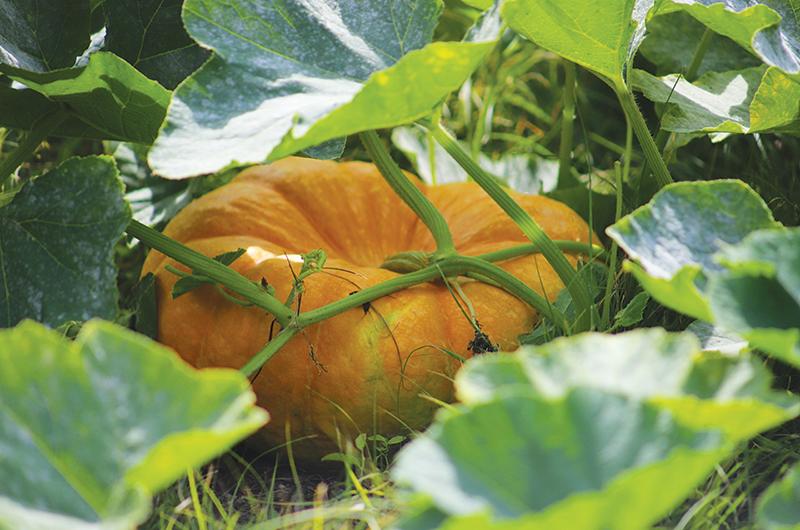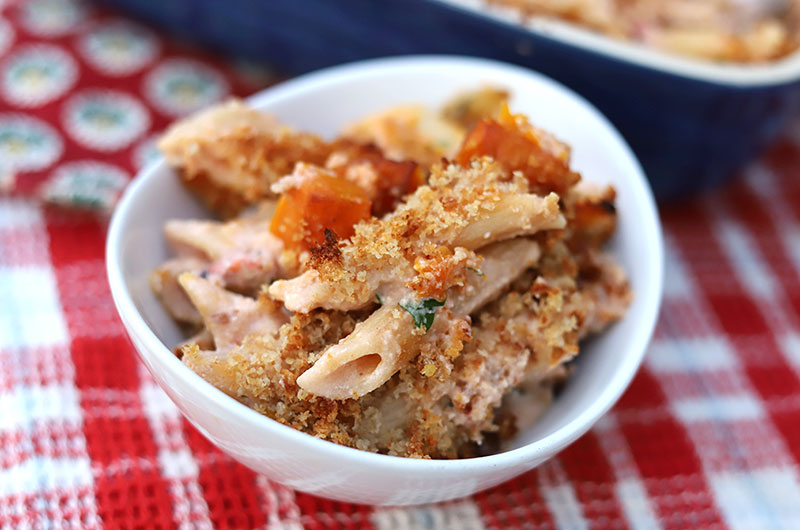
A funny thing happened in our front yard in West Tisbury this summer: a pumpkin patch – a very, very big pumpkin patch – sprang up. At first I thought it was just one plant, maybe two. I was wrong. By the time the vines had finished sprawling, they probably covered 500 to 600 square feet of ground, and there were dozens of mature pumpkins. And surprise – there wasn’t just one kind of pumpkin out there, but several. They were fancy, decorative pumpkins – white, orange, red, and green; some ribbed and some laced; some shaped like a wheel of cheese and others like Cinderella’s carriage with a couple wheels missing.
The pumpkin seeds rode in on a load of horse manure from Johnny Hoy. (The man of many talents doesn’t just sing and fish and roof – he cares for a horse stable too.)
Our front yard is really a small field, and we are in the process of converting it into a huge garden. We live in a glacial bottom on the south side of the Island, and the soil is all kinds of terrible – almost 100 percent sand. So, when we set out to improve the soil, we put in a call to Hoy for manure.
The idea that we had decorative pumpkins growing in our yard made me giddy. These are the things I always go out and buy (spending too much money on them), and then attempt to Martha-Stewart (that’s a verb) the outside of my house with them. I never achieve a magazine-worthy look, but I have fun. Now here were all these goodies I didn’t even have to buy!
Then, even better, I discovered that several of these so-called pumpkins are edible. Of course, most winter squashes and pumpkins are edible to some degree, but some have wet, stringy flesh (not so appealing) and others have sweet, dense flesh (delicious). The latter is apparently the case with the green jarrahdale and the flat white Boer that appeared in our field. (At least I think those are the correct varieties, based on my sleuthing.) The jarrahdale has “sweet, thick orange flesh,” according to Johnny’s Selected Seeds, and the South African flat white Boer has sweet orange flesh that’s perfect for baking, according to Rare Seeds. (I have not been able to cut into one as of this writing as they are still curing – sitting in our warm hoop house to harden the skin and the stem for a few more days before we transfer them to a cool, dry place to store. Curing should ensure that they keep well.)
It’s also possible that one of our pumpkins with a reddish hue is the lovely rouge vif d’etampes, or Cinderella pumpkin. Perhaps not as tasty as some, but the mild flesh is apparently good in pies.

So now, provided we cure the pumpkins properly, we are looking at a winter of (very) locally grown squash to eat. Ever since I arrived on the Island seventeen years ago, I’ve been trying to maximize the amount of local food I eat, and I especially get a kick out of doing this in the winter. Growing food that keeps is part of my strategy, and this year, in addition to surprise edible pumpkins, I also had a really good crop of onions. The onions were not an accident, though – we planted those!
We grew two kinds of onions. The first, Ailsa Craig, is one I have grown for many years, and, true to form, it produced big, plump, lovely onions again this year. In years past, we’ve managed to stretch our supply of Ailsa Craigs just about to Thanksgiving. They’re not supposed to be good “keepers,” but that’s a pretty good run. This year I decided to add the highlander onion, too, because it’s got a rep for lasting six months or so – maybe through January or even February for us.
Provided we don’t eat them first.
The problem we encountered this summer is this: the highlander onions, which were in the same bed with the same irrigation and the same fertilizer as the Ailsa Craig, matured at a much smaller size than the Ailsa Craig. Most of the highlanders are the size of ping-pong balls, while the Ailsa Craigs are like softballs.
Onions go through several stages of growth, related to both variety and daylight. But it is a thrill to watch them begin to bulb up in early summer. (They are traditionally planted in April here on the Island.) They get fat, their green tops slowly begin to turn brown and flop over, and eventually the neck – where the onion bulb and the leafy tops meet – narrows and just about seals itself, provided the leafy tops have completely died. While the neck is narrowing, the first layers of papery brown skin are forming on the bulb.
Some varieties, such as highlanders, have thin necks which seal themselves quite efficiently, reducing the chance of spoilage. Ours certainly did that, and they do look like they’ll last a while. But because they’re so small, the overall yield isn’t much. The entire harvest fits in a nice little basket in my kitchen, tempting me to cook with them because they are the perfect size for weeknight cooking. I’m already dipping into this stash quite
a bit, even though technically I should be using the bigger onions that don’t last as long.
The solution, I’ve realized, is to use the larger onions – the Ailsa Craigs – in recipes where onions take on a bigger role. And it just so happens that onions play well with winter squash. I’ve combined them in gratins, soups, tarts, risottos, and even tacos over the years. But one of the tastiest destinations for these two is a baked pasta. I’m including a recipe for Baked Pasta with Roasted Squash, Caramelized Onions, and Ricotta (link below) that also features a pink sauce – a combination of crushed tomatoes and a little heavy cream – as well as ricotta and Parmesan. It is totally delicious.
To use a winter squash, such as butternut, in the baked pasta, I peel it, cut it into small cubes, and roast it until tender and browned. But if you’re facing a big pumpkin like the ones we’ve harvested, or you’re dealing with a thick-skinned winter squash, don’t even think about peeling it. Just cut the pumpkin into wedges, scoop out the seeds, toss the wedges with oil and salt, and roast them. When done, you can scoop the flesh away from the skin and just dollop it into the pasta mixture before baking (rather than mixing in roasted cubes).
This baked pasta serves four to six and is truly comforting from early fall to late winter. Serve it with a salad of arugula, endive, and radicchio or with a bracing green vegetable, such as broccoli raab. I won’t tell if you sneak a little cooked sausage into the pasta too.
I don’t think Linus’s great pumpkin showed up in our pumpkin patch, but we’ll take a windfall of good eating – and decorating – instead.







